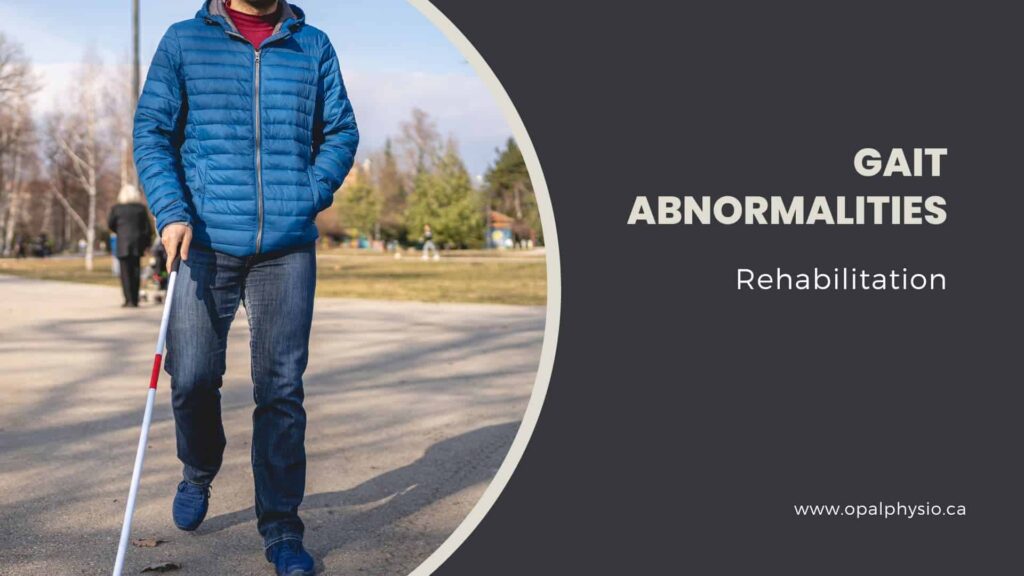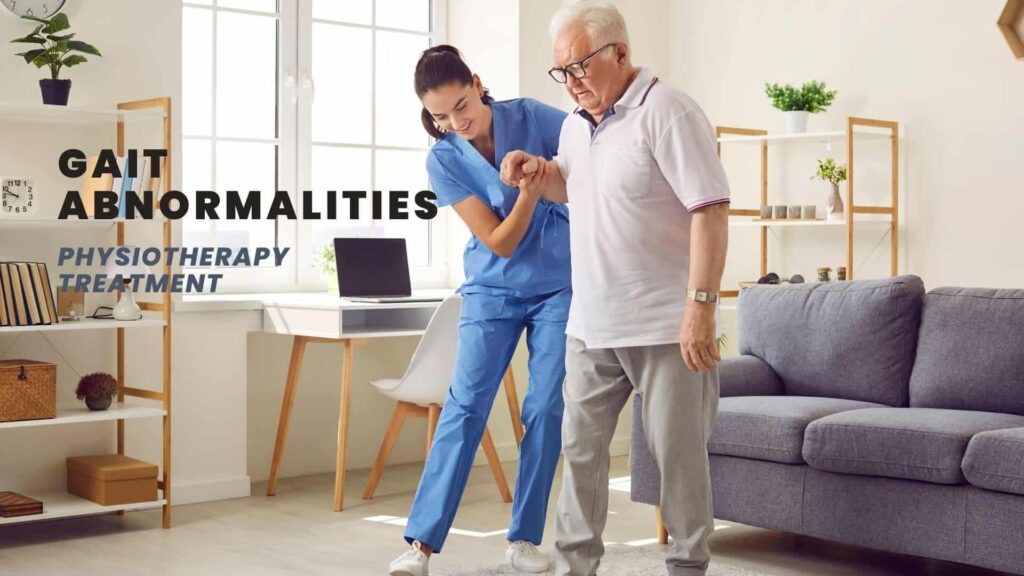Gait Abnormalities
At Opal Physiotherapy Clinic in Langley, our professional team is dedicated to helping you overcome gait abnormalities and improve your quality of life. Our clinic offers various services, including physiotherapy, to address various gait issues and help you regain mobility and confidence.
Physiotherapy treatment for gait abnormalities depends on the specific type of gait issue. Treatments are based on whether you have balance and coordination issues, require lower limb strengthening, gait re-education or have any other issues.

What are gait abnormalities?
Gait abnormalities are changes in how a person walks or deviations from a normal walking pattern. Various factors, including medical conditions, injuries, and certain medications, can cause these changes. Gait abnormalities can make walking difficult and can lead to falls.
Symptoms of gait abnormalities
Symptoms of abnormal gait can vary depending on the specific type of gait issue. Some common symptoms include:
- Altered stride length: Individuals with walking problems may exhibit unusually short or long strides while walking
- Feeling out of balance when walking: Gait disorders can lead to an unsteady or wobbly walking pattern, making the person more prone to stumbling or falling.
- Toe-walking or heel-walking: Walking on the toes or heels instead of using a normal heel-to-toe pattern can indicate a gait abnormality.
- Stiff muscles or joints: Stiffness in the muscles or joints of the hips and legs can be a symptom of abnormal gait, making walking more difficult, less fluid and rigid.
- A wide base of support gait pattern: Some people with gait disorders may adopt a wider stance while walking, possibly to improve balance.
- Irregular, jerky movements when walking: These movements can be seen in ataxic gait, which is often associated with cerebellar disorders and can cause disjointed or jerky movements while walking.
- Shuffling gait: A reduced stride length or clearance from the floor can be observed in certain gait abnormalities, such as Parkinson’s disease, where individuals may drag the foot and take smaller steps while walking and have a shuffling gait pattern.
- Asymmetry: Unequal movement or weight-bearing on one side of the body compared to the other can be a sign of gait abnormalities.
- Limping: A noticeable limp while walking can result from pain, muscle weakness, or joint issues.
- Frequent tripping or falling: Abnormal gait can lead to reduced stability and balance and an increased risk of tripping or falling. Underlying neurological conditions can also cause this.
- Decreased arm swing: An abnormal decrease in the arms’ natural swinging motion while walking can indicate a gait problem.
- Difficulty initiating or stopping movement: Some individuals may have trouble starting to walk or stopping abruptly due to coordination issues.
- Foot drop gait: Difficulty lifting the front part of the foot while walking can cause the foot to drag on the ground, leading to an abnormal gait. This can be from muscle imbalance or nerve injury.
It is essential to consult with a healthcare professional if you experience any of these symptoms, as they may indicate an underlying condition that requires further evaluation and treatment.
Causes of gait abnormalities
Some common causes include:
- Neurological conditions such as cerebral palsy, Parkinson’s disease, and multiple sclerosis
- Musculoskeletal conditions such as arthritis, back pain, and leg injuries
- Balance disorders
- Vestibular disorders
- Visual problems
- Inner ear problems
- Foot problems
- Side effects of certain medications
Types of gait abnormalities
Various types of abnormal gait can be attributed to neurological conditions, orthopedic problems, and other medical issues. Some common types of gait abnormalities include:
- Hemiplegic gait: Often seen in stroke patients, the affected leg is extended, internally rotated, and swung in a wide arc rather than lifted while walking.
- Spastic gait: Is characterized by an abnormally narrow base, dragging both legs and scraping the toes. It is commonly seen in individuals with cerebral palsy and bilateral periventricular lesions.
- Neuropathic gait: Is associated with peripheral neuropathy and sensory ataxia, which can cause unsteadiness and difficulty walking.
- Myopathic gait: Is caused by muscle weakness and can be seen in conditions such as muscular dystrophy and myositis.
- Parkinsonian gait: Also known as propulsive gait, it is characterized by a stooped, stiff posture with the head and neck bent forward, commonly seen in individuals with Parkinson’s disease.
- Choreiform gait: This gait is associated with certain basal ganglia disorders, such as Sydenham’s chorea and Huntington’s disease, and involves irregular, jerky movements.
- Ataxic (cerebellar) gait: Is characterized by uncoordinated, disjointed, or jerky movements while walking and is often associated with cerebellar disorders.
- Sensory gait: Is caused by sensory deficits, such as peripheral neuropathy, and can lead to unsteadiness and difficulty walking.
- Antalgic gait: Characterized by a shortened stance phase on the affected side and is often caused by pain from arthritis or joint pain.
- Dystonic gait: Is characterized by involuntary muscle contractions and abnormal postures, commonly seen in individuals with dystonia.
- Frontal (apraxic) gait: Is characterized by difficulty initiating walking, short steps, and a wide base, often seen in individuals with frontal lobe dysfunction. This can be from trauma to the head, stroke, tumours, neurological conditions or developmental disorders and post-neurological surgery.

How can physiotherapists help with gait abnormalities?
Physiotherapists can help improve walking problems or gait abnormalities.
- By Identifying the underlying cause of the gait abnormalities.
- Treatments are aimed at correcting the underlying issues.
- Individualized treatment plan to the specific needs of the patient.
- Monitor the patient’s progress and adjust the treatment plan that helps improve their gait.
Physiotherapy treatments for gait abnormalities
There are many different physiotherapy treatments for gait abnormalities.
Why choose us for your gait abnormalities rehabilitation?
Our experienced and dedicated team is committed to providing personalized care to help you overcome your gait abnormalities in Langley. We understand the importance of addressing your individual needs and goals, and we will work closely with you to develop a customized treatment plan based on the underlying cause of your abnormal gait and deliver the best possible results.
Contact us today to schedule an appointment and take the first step toward changing your gait pattern and regaining your mobility and confidence.
